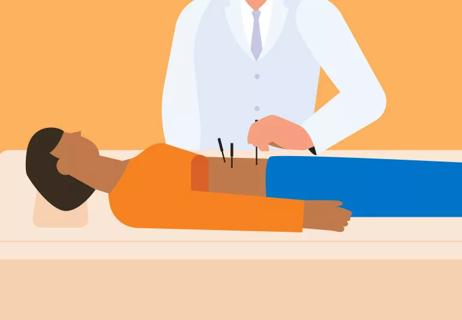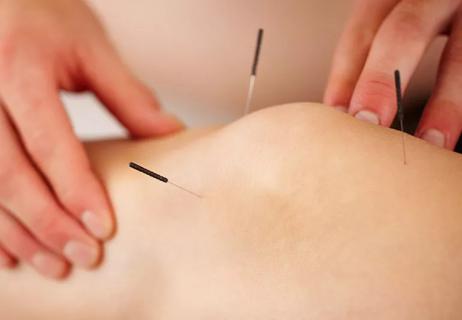Discover the benefits of this ear acupuncture technique

Addiction and trauma are two very heavy and complex things to grapple with. Fortunately, no one has to battle either — or both — alone. Along with treatment solutions that take a person’s individual needs into account, there are supplemental therapies that can help promote healing and recovery. The National Acupuncture Detoxification Association (NADA) acupuncture protocol is one of those therapies.
Advertisement
Cleveland Clinic is a non-profit academic medical center. Advertising on our site helps support our mission. We do not endorse non-Cleveland Clinic products or services. Policy
What is the NADA protocol and how can it help in cases of addiction, trauma or other mental health conditions? Licensed acupuncturist Tim Sobo, LAc, explains how it works and shares some tips for ensuring success with this form of acupuncture.
The NADA protocol was created in the 1970s at Lincoln Detox in the Bronx, New York. This form of acupuncture for the withdrawal of drugs was rooted in the research of Chinese neurosurgeon, H.L. Wen. Wen took a closer look at the effects of electrostimulation on the ear’s lung point and how it could help in relieving acute opium withdrawal symptoms.
Today, NADA provides training for:
While traditional acupuncture sessions might involve the placement of needles in different points on the body, the NADA protocol is an auricular or ear therapy. Needles are placed in five specific points and patients rest for about 30-45 minutes with them in.
The points are:
Advertisement
NADA is usually offered in group settings which makes it more affordable. But there’s another added value in this community acupuncture approach. People experiencing it will know that they’re not going through things alone.
“The advantage to the group setting is a combination of a shared experience, accessibility and affordability. From a purely clinical standpoint, you get the shared effect of being around other people and it gives you the perspective of, ‘We’re all going through this together — and we’re going to get better together.’”
The NADA protocol has been shown to decrease cravings for alcohol, drugs or even cigarettes. Sobo says it makes withdrawal symptoms less intense as well. This form of acupuncture can also be used to help manage gambling problems and food addiction.
NADA acupuncture has been instrumental in helping people recover from trauma or natural disasters. When used after 9/11, it helped people relax and sleep better. The same could be said when it was utilized after hurricanes Katrina and Rita in 2005.
“There’s a group called Acupuncturist Without Borders which goes to places after natural disasters occur. These acupuncturists administer the NADA protocol to those affected to help decrease the stress of these situations,” says Sobo.
One study showed that the NADA protocol could help improve the quality of life for those who were in traditional treatment programs. Participants who received NADA acupuncture reported feeling better about themselves and had more energy. They also engaged in less alcohol or tobacco use during the three- and six-month follow-up periods of the study.
“The NADA protocol can increase calmness, promote better sleep and decrease agitation and stress. Overall, it just leaves people feeling better and that allows more positive things to happen. For example, using it in a mental health situation could help people calm down so they can form better connections with their therapists. This then leads to better counseling sessions moving forward,” Sobo says.
As long as you’re going to a trained acupuncturist, there aren’t any risks.
“Side effects are essentially non-existent with the NADA protocol or acupuncture in general. The needles are all single-use, sterile and disposable so there is not much of a risk for infection. And when properly done, the needles shouldn’t go that deep into the ear.”
NADA has even stated that the protocol is safe for those who are pregnant. The group reports having a very successful documented history of treating pregnant people who are living with addiction.
According to Sobo, NADA acupuncture is more effective when participants are receptive and committed to treatment. If the willingness isn’t there, the protocol won’t be successful.
“For it to work, there has to be the desire to quit. For example, you can’t be passive about wanting to quit smoking. But if you have the mindset of ‘I’m going to quit smoking and I’m going to try my best to do everything right,’ the NADA protocol will be effective in addition to that.”
Advertisement
It’s important to realize that the overall process is going to take time, but Sobo says you should notice results after a few sessions.
“It won’t be a situation where you’re treated seven times and nothing has changed. If you’re trying to quit smoking, you might notice that instead of smoking a pack a day, you’re only smoking three-quarters of a pack by visit two or three. As you keep getting treated, that three-quarters of a pack can go to half, then a quarter and eventually, you’ll have less of an urge to smoke. Getting there might take a month or a few months depending on a person’s history of smoking. But since we’re using the NADA protocol to help treat addiction, the withdrawal symptoms have to be brought down gradually and managed.”
The same goes for trauma or mental health conditions.
“It’s going to be a process that builds on itself. Single, one-off traumas can be treated quickly and efficiently with the hopes that they won’t become lifelong problems. But if you have a long history of trauma, the length of your treatment will depend on your goals and the condition that needs to be treated. It’s similar to seeing a mental health professional. You’re never really done with them, but you’ll eventually get to a point where you won’t need to go to therapy all of the time.”
Sobo adds that it’s best to see a practitioner who encourages you to stick with therapy and any other treatment programs you’re in. If someone tells you that NADA acupuncture is the only thing you need and suggests that you end other treatment programs, that’s not the right acupuncturist for you
Advertisement
Learn more about our editorial process.
Advertisement

It’s great for stress relief, which can go a long way when you’re trying to conceive

This ancient treatment is often a complement to acupuncture

Find out what it is and how it can help the body heal

Test your knowledge about this ancient medical art

Acupuncture, herbs and hypnotherapy curb cravings naturally

Traditional Chinese medicine technique recommended for chronic pain

New government advisory recommends non-addictive options first

Research doesn’t support many health claims linked to detoxification programs

Type 2 diabetes isn’t inevitable with these dietary changes

Applying a hot or cold compress can help with pain